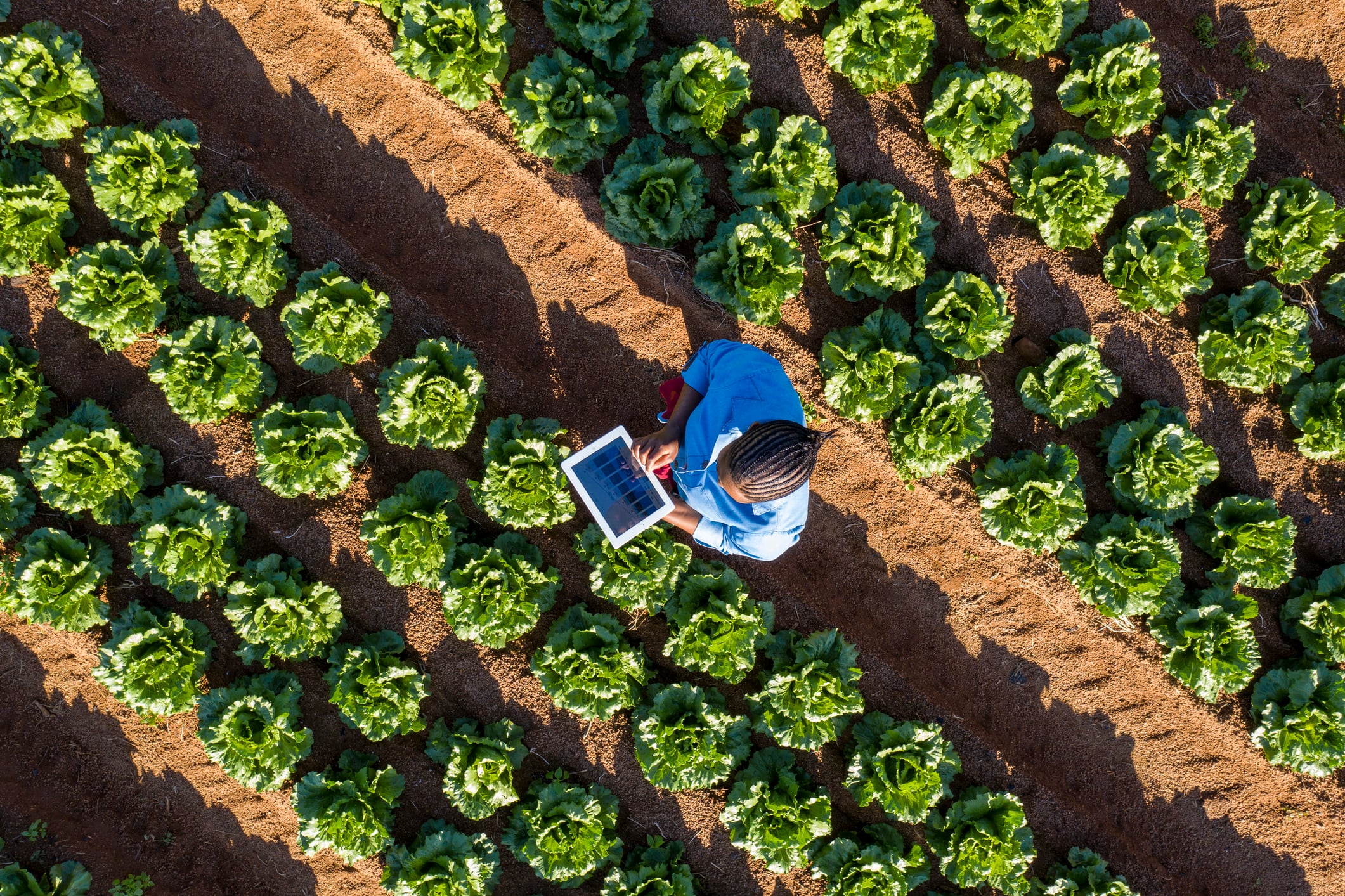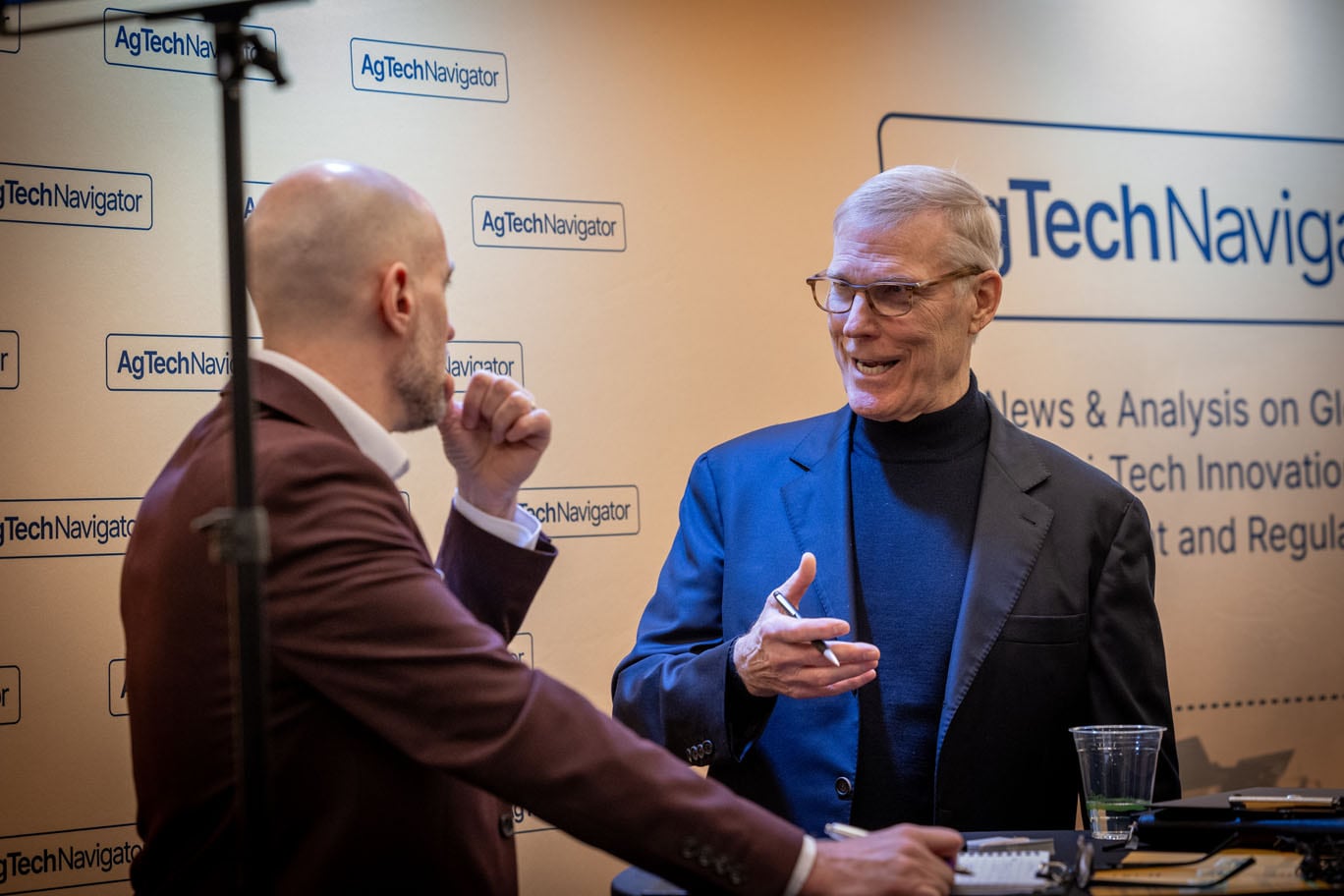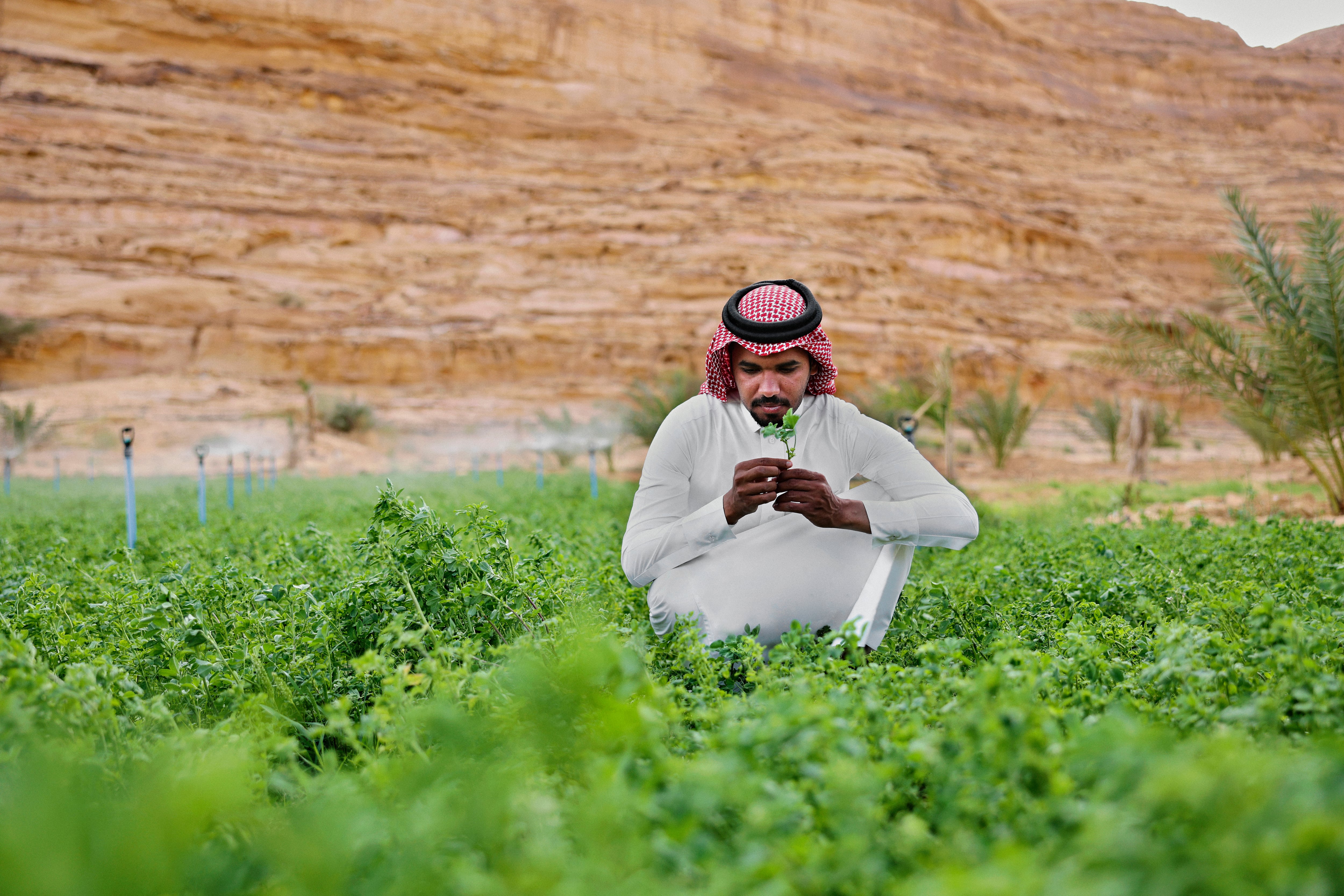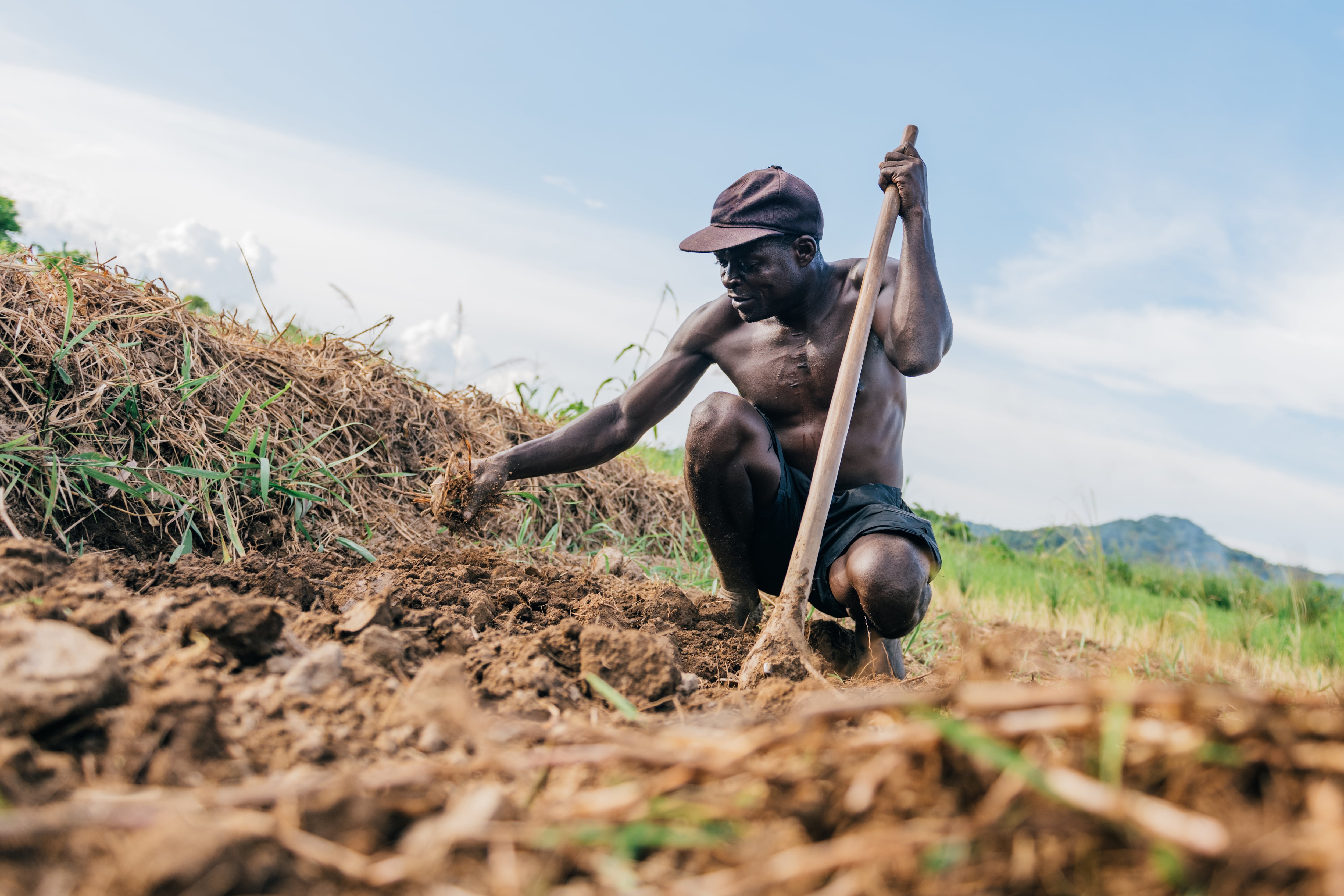Desmond Koney’s background is in mechanical engineering. But after inheriting his father’s pineapple farm in the outskirts of Accra, he got more than a ringside view of the challenges faced by farmers. The experience set him on a path centred on transforming Africa’s agricultural landscape through technology.
“I always wanted to stay away from the farm because it was a lot of hard work,” he recalls. He began to ask, “Why can’t we optimise farms like you would optimise a factory?”
Co-founded by Koney in 2017, Complete Farmer’s digital marketplace is designed to connect farmers to local and international buyers to boost their livelihoods.
The buyers on the marketplace – made up of food manufacturers, FMCGs and commodity traders – are connected to farmers growing crops that meet required specifications and global market standards.
Farms don’t only connect with the buyers. By using sensors and AI algorithms to monitor soil conditions, water levels, and crop health, the company helps farms to predict the best times for planting, watering, and harvesting their crops based on real-time data, drastically improving efficiency and yields.
We spoke to Koney to learn more.
ATN: Tell us more about the company
To find famers, we work through an agent network of agronomists who go to them, map out their land and take them through the onboarding. We start by mapping out the farmer’s field so we have data on what their lands are good for so we can match the demand to the farmers based on the soil and the weather profile of where their farms are located.
We then give what we call our agronomic protocols. These are data-driven decision-making or agronomic extractions that help the farmers to then grow to meet the buyer’s requirements.
ATN: Give us some examples
Say there is a buyer looking for soybeans with a certain percentage of oil content in them. Once we’ve done the matching, we will use this information to recommend what fertiliser the farmer needs to apply and what varieties of seeds they need to use.
The protocols then help farmers make real-time decisions. For example, through our weather forecasting system we can advise the farmer when it is best to properly apply that fertiliser and how much should they apply given all the data we are collecting.
ATN: How do you make this information actionable for the farmers?
In most parts of Africa farmers do not have a laptop or a computer. So we disseminate this through a mobile app. For those without a mobile app we do SMS and interactive voice messages so farmers can listen to the instructions that they need to follow. It’s in their local languages as well. This helps them to farm to meet the requirement of the buyers.
ATN: Who are the buyers on the platform?
FMCGs, food processors, and commodity traders are the typical types of buyers that we work with. About 80% are outside Africa. They mainly ship to the Gulf, Southeast Asia and Europe.
We are also providing them with the full traceability from when the farmer purchases seeds to when the goods get delivered to them. A buyer who has placed an order can see everything that’s happening in real time as well.
ATN: How many are using it and where?
We have around 1,500 buyers and nearly 55,000 farmers using the platform in Ghana and Togo.
ATN: The marketplace is free for the buyers and farmers to join. How do you make money?
We make money at the end of production when the farmers bring the produce to one of our fulfilment centres. That’s where we do the past-harvest cleaning and quality assurance. Then we add a markup and sell it off to the buyer – they are only paying for the produce.
ATN: Tell us more about the farmers using your platform
These are mainly smallholder farmers producing anything from two to 10 acres of production. We also have commercial farmers with 20 acres and above. We have 10 crops that we have protocols for: soybeans, ginger, sweet potatoes, chilli pepper, sesame, cassava, pineapple, mangoes, cowpea and ground nuts.
ATN: Give us more examples of how you help famers meet the demands of buyers
We work with lots of chilli pepper buyers. They often want to verify how hot the pepper is. So we try to optimise the fertiliser application dates to boost their heat generation property. We also advise on harvest timelines given the destination of the buyer as chilies do not continue to ripen after being harvested.
We also advise farmers on crop rotations. After growing chili peppers for a while it consumes all the nutrients which means you need to grow another crop at a different root depth for this plant to be able to replenish itself. Those are some sustainable techniques that we advise chili pepper farmers on. If not, their land loses its fertility quickly and it becomes unproductive.
ATN: You raised $10.4m in 2023. What are your plans and the expectations your investors have on you?
We are profitable. The expectations are on expansion to reach more farmers. Currently we get more demand on the platform than we are able to supply.
ATN: So how can you reach more farmers?
It’s about being able to build more fulfilment centres. That’s the bottleneck. We could easily work with a million farmers by now, but we need to be as efficient in collecting the produce from them and selling it to the buyers on international markets.
ATN: How many fulfilment centres will you build?
We currently have seven in Ghana and Togo, usually around a 30 kilometres radius from the farmer. By the end of the year, we are looking to get to 15. Two will be cold chain packhouses for perishables. We are also looking to expand into Cote d’Ivoire and Senegal this year.
ATN: You say are building ‘the Amazon for African agriculture’. What do you mean?
We mostly hear that Africa has this huge amount of arable land, and Africa can feed the world. We want Complete Farmer to be the vehicle that realises that vision of connecting African agriculture to the rest of the world by building the supply chains for that.
ATN: So you can help boost African exports as a whole?
We are trying to close the yield gap that farmers have. For the average crop commodities farmers currently are not meeting 50% of their yeild potential of some of these. The more we can close that yield gap we can also boost the GDP of African continent through agriculture.
Because of the current blocked supply chains farmers still don’t earn the value of their work. We’ve seen commodities that are sold for premiums in European and Asian markets, but the farmer doesn’t realise their value in those markets. By being able to build a supply chain directly to the markets then a lot more value is realised by the farmers.
ATN: More generally, what’s needed to oil the wheels of innovation in Africa?
I think there is a lot of room for innovations in agtech when it comes to Africa and the reason is we have a lot of land. About 60% of the population is involved in agriculture.
The challenge, however, is that you have these small-scale famers in fragmented locations isolated from the supply chain and that is primarily an infrastructure problem.
And I think people are trying to copy and paste models from elsewhere without taking into consideration this nuance of the small-scale production in isolated areas. It requires a bit of infrastructure to bridge the gaps. When it comes to financing these innovations, I don’t think a pure SAS venture capital model cuts it. I think anyone looking to invest in Africa needs to think of some sort of blended finance. It could still be a VC model, but it must be open to a blended mix of financing to be able to build infrastructure whilst also building the innovations.
ATN: Is your financing model an example of that?
Yes, we have some debt funding that will help us to build this fulfilment infrastructure and the last mile logistics network to be able to collect produce from the farmers.





